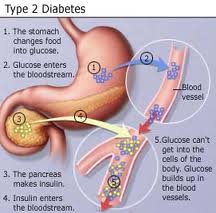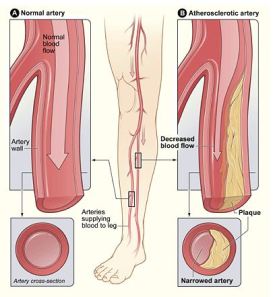Last month, the world’s best-known medical journal, The Lancet, published a study by Mumbai’s Tata Memorial Hospital (TMH) and the Centre for Global Health Research about how cancer single-handedly kills six lakh Indians every year.
Termed as the Million Death Study (MDS), some of the findings were not just startling in terms of numbers but also eye-opening in terms of new cancer trends emerging in the country.
While the majority of cancer deaths in the rest of the world occurred in people above the age of 70, most of those hit in India were in the 30-60 age bracket. This pointed to how India’s new urban lifestyle: sedentary, with poor eating habits and lack of physical activity, was starting to take a toll.
“Though tobacco is still the largest killer,” Director of Tata Memorial Hospital Dr Rajendra Badwe told Mirror, “the day is not far when cancers caused by a bad lifestyle will catch up and overtake it.”
Badwe described the cancer scenario as tragicomic. Though there is still no definitive answer on what process in the human body actually causes the disease, he said that at least 70 per cent of all cancers could be easily prevented.
“They can be wiped out by quitting tobacco, healthy eating, and doing some exercise,” he said. “Everyone has to die eventually. The loss is greater when someone dies young, and this is where cancer is hitting us hard.”
The head of TMH’s digestive diseases and clinical nutrition department, Dr Mohandas Mallath, said the first problem was that the Indian-on-the-go ate too many calories. “We consume calorie-dense snacks between meals. We hardly consume any vegetables, and since we do almost no exercise, the calories remain in the body. These, in turn, make us prone to several lifestyle-related cancers,” he said.
In a review paper on ‘Dietary Prevention of Cancer’, Mallath has written about how excessive body fat and the deficiency of protective nutrients cause up to 30 per cent of cancers such as breast, thyroid, kidney, uterus, oesophagus, colon, rectum, pancreas, and gall bladder.
The World Cancer Research Fund (WCRF), a conglomeration of charity bodies in the UK that works towards preventing cancer, estimates that 30-40 per cent of cancers — or three to four million new cases every year — can be prevented by appropriate food and nutrition, regular physical activity and avoiding obesity.
Keeping these figures in mind, and with the link between cancer and lifestyle now well established, here is a 10-point plan that doctors recommend must be followed:
1. Limit calorie intake
Consumption of energy-dense foods loaded with calories, sugar and fat is contributing to an obesity epidemic, which in turn, leads to cancer.
“In urban India, our meals largely consist of polished rice, packaged foods with preservatives, and crispy fried food,” said Mallath. “This makes what we eat on any given day extremely calorie-heavy with few nutrients.”
Add to these sugary juices, aerated drinks, sports drinks, and the problem increases manifold. Fresh natural fruit juices, he said, were a much better alternative.
In his review paper on the subject, Mallath has written that the genesis of the problem lies in a very basic Indian notion that a ‘chubby child is a healthy child’. In reality, he wrote, overweight children are more likely to be obese later in adulthood, and consequently, become more prone to developing one of the lifestyle cancers.
“Processed foods have replaced the traditional whole-grain and cereal- based weaning foods,” he said, referring to how traditional grocery shops are fast making way for supermarkets which stock more of processed food. “Eating fresh solves half the problems but it’s becoming less due to factors such as convenience and aggressive marketing.”
2. Eat vegetables, fruits, whole grains
A report compiled by the Union for International Cancer Control (UICC) followed globally talks about how plant-based diets, which are high in natural nutrients, could reduce cancer risk drastically.
The report stresses on eating more vegetables, legumes, pulses and fruits contain vitamins, minerals and fibre. It recommends using whole grains (for bread and rotis) as opposed to the normal processed flour.
Several experts in the medical fraternity also recommend the consumption of phytochemicals, or non-nutritive plant chemicals. Some of the known phytochemicals are found in fruits (flavanoids), tomatoes (lycopene), and soy (isoflavones).
3. Limit intake of red meat
Though red meats are good sources of protein, vitamins and minerals, they are also major contributors to total fat, saturated fat and cholesterol. “Excessive meat consumption has been directly linked with an increased risk of colorectal cancer.
Eating meat in moderation and cooking it in less oil makes a big difference,” said Dr Sanjay Sharma, who is attached to the SL Raheja Hospital in Mahim.
A study done on colon cancer survivors found that a high meat-and-dairy diet, when coupled with limited plant-based food, increased the risk of recurrence by 3.25 times.
4. Modify the Indian style of cooking
Traditional Indian cooking involves heating up oil to a very high temperature and then adding spices to it. This, doctors said, produces a high quantity of saturated fats, which lead to cancers of the breast and small intestine.
Sharma said global statistics showed that the occurrence of cancer was extremely low in countries where olive oil, instead of refined oil, was used as the main cooking medium.
“In Italy, for example, even though their food mainly revolves around cheese, the use of olive oil is mainly in raw form. Even if they’re cooking, the oil is warm instead of hot,” Sharma said. “This fact alone has a huge impact on their cancer numbers.”
Dr Tejinder Singh, a medical oncologist at Fortis Hospital, said that deep-frying food or cooking it at a very high temperature produces acrylamides, a mutagen that is seen as a probable human carcinogen.
The best way to cook, according to Singh, is steaming food and adding small amounts of water until it became tender.
5. Use Indian spices
Several food ingredients used commonly in India are known for their immunity-boosting and cancer-fighting properties.
Spices such as garlic, ginger, basil and coriander are encouraged, and food seasoned with turmeric and onion prevents stomach cancers. Rosemary is known to prevent carcinogens from binding and causing tumourous growths.
6. Limit alcohol consumption
The World Health Organisation (WHO) recently declared alcohol as the largest known cancer-causing product sold without any warnings signs. Drinking heavily causes cancers of the pharynx, larynx, oesophagus, liver and mouth.
The risk of getting these cancers increases twice with two large pegs per day, and goes up exponentially as alcohol intake increases.
What was worrisome, doctors said, is that alcohol enjoys a status of social acceptance in India, like tobacco did 10 years ago. Recent estimates suggested that world-wide 3.6 per cent of all cancers, and 3.5 per cent of all cancer deaths, were due to alcohol consumption.
The recommendation from most doctors is that men should limit their alcoholic drinks to not more than two measures per day, and women to not more than one a day.
7. Keep Body Mass Index (BMI) in check
A simple BMI calculation is dividing your weight in kilograFms with the square of your height in metres. The ideal result should be between 18-25. The 25-30 range is categorised as ‘overweight’ and above 30 as ‘obese’.
Several studies across the world link excess body weight to cancers of the kidney, endometrium, pancreas, breast, thyroid and gall-bladder. In simple terms, fat tissues produce excessive amount of the hormone estrogen, which can lead to several canacers.
“Other than that, people suffering from obesity have increased levels of insulin and insulin-like growths in their blood, which promote the development of certain tumours,” Singh said. Fat cells produce a hormone called Adipokines, which may stimulate or inhibit cell growth, and a hormone called Leptin, which is known to promote cell proliferation.
More belly fat, or a larger waistline, is seen to have a direct link with heightened risk of endometrial cancer in women. Global statistics show that stomach cancer are on the decline in several regions, including India. But there has been a marginal rise in the incidence of cancers in the caldia, which is a part of the stomach. Some studies link this with obesity.
8. Exercise regularly, even if thin
There an a undeniable, universally accepted, inversely proportional relationship between physical activity and cancer risk. “Being active influences the development of cancer in multiple ways. It protects against tumour development through energy balance, hormone metabolism, insulin regulation and by decreasing the time an organ is exposed to potential carcinogens,” said Singh.
According to him, physical activity alters a number of inflammatory and immune factors in the body. “For example, tumour development in the breast can be prevented by lowering the hormone levels, improving immune response, and assisting with weight maintenance.”
But exercise doesn’t only help those who are perennially fighting a losing battle with body weight. Even people who are thin, and have a naturally high metabolic rate, must spend some time exercising in order to stem the growth of cancer.
According to a UICC report, the general guidelines for physical activity for adults is 30 or more minutes of moderate to vigorous physical activity per day. A longer session, it says, it even better. For children, the recommended routine is at least an hour. Fair warning: this does not include time spent on video games.
9. Beat stress to beat cancer
Several studies over the last 30 years have examined the relationship between psychological factors, especially stress, and the risk of cancer.
Though not all of them have indicated a direct link, stress often leads to obesity, heart disease and depression, and to over-eating, smoking, drugs and excessive drinking, all of which increase the risk of cancer.
A recent research conducted on animal models suggested that the body’s neuroendocrine response (release of hormones into the blood in response to stimulation of the nervous system) can directly alter important processes which would have normally protected against the formation of cancer. These include DNA repair and regulation of cell growth. “The writing on the wall is always remain happy,” Singh said
10. Have regular check-ups
Doctors say the single largest problem with cancer detection is how so many cases come to them late, when not too much can be done to help the patient. The biggest reason for this is that there are no clear symptoms, and many are easily brushed aside as other, smaller ailments.
They warn that any irregular feeling over an extended period of time, ranging for dull pain to breathlessness, calls for an immediate examination. In certain cases, especially breast cancer, they suggest that simple self-examinations be carried out regularly.
The increasing numbers of breast cancer cases in India have brought into focus the efficacy of Mammography, the only screening recommended in the country. “How effective a mammogram is depends on fat content, which often makes it difficult to pick up a tumour,” said Dr Vinay Deshmane, a consultant in the surgical oncology and breast disease department at PD Hinduja Hospital.
“The number of women coming to us for a mammogram has gone up considerably. They’re mostly from the higher socio-economic background and come for tests after one of their family members, friends or colleagues has been diagnosed with a lump,” Deshmane said.
“Sometimes it’s too late by the time they reach us because they didn’t realise the problem existed until someone close to them was asked to undergo treatment. Regular self-examination gives us a better chance of helping them.”
• Six lakh Indians die of cancer every year
• Most cancer deaths in India in 30-60 age bracket
• Sedentary lifestyle, poor eating habits taking a toll
Get consultation : http://www.fortishospitals.com/

















